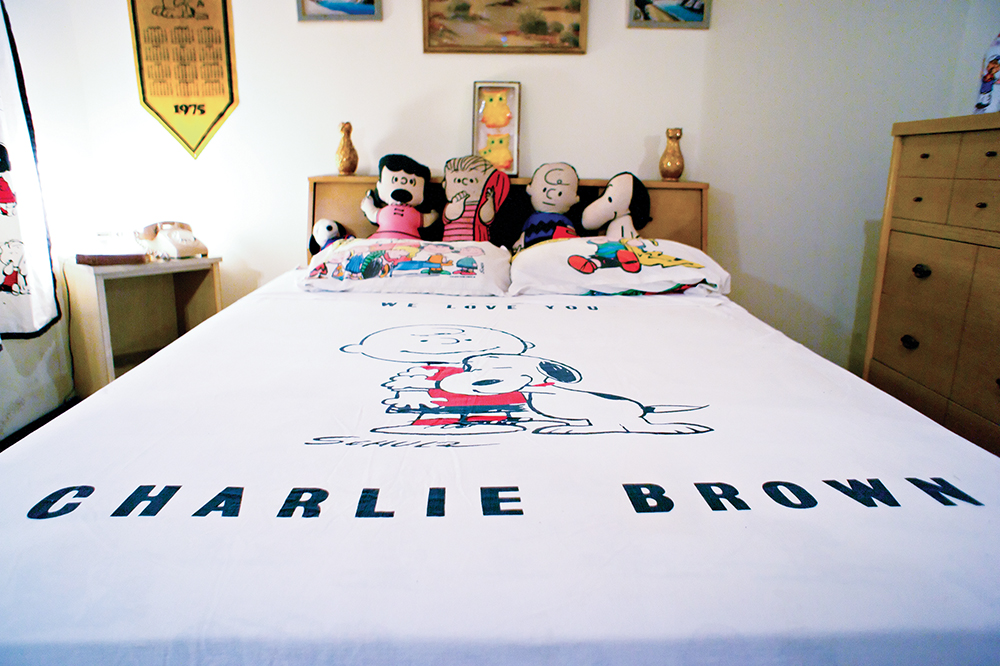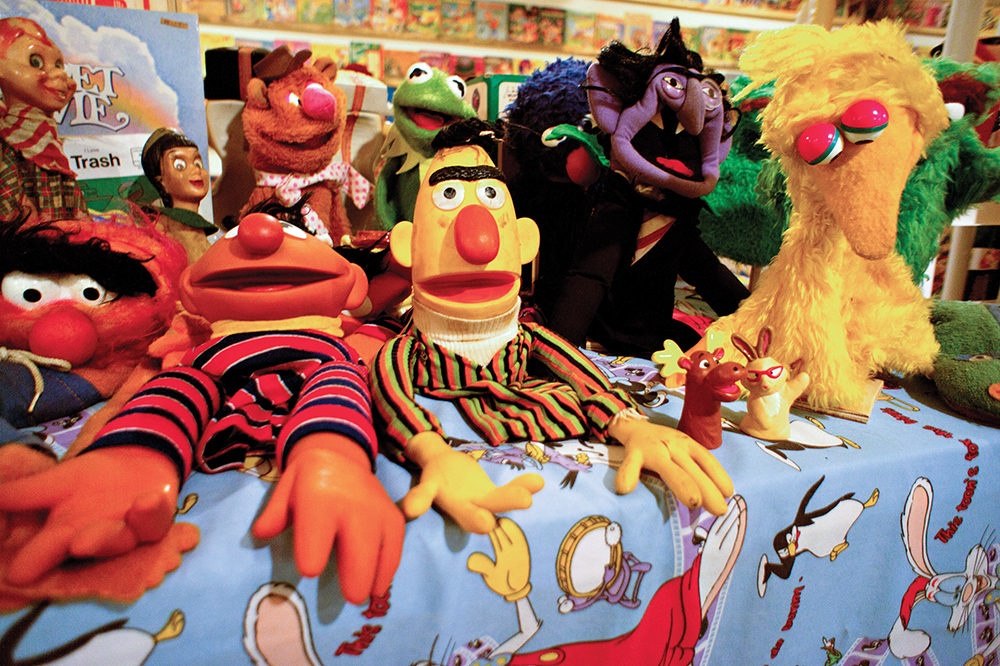Man’s home is a personal museum of childhood memories
By Aaron Tanner Photos by Brad Daly

Remember when songs were on old 45s, when children eagerly awaited Saturday morning for their favorite cartoons on network TV, and Rock City barns dominated the American roadside? Those memories are captured inside a time capsule that is disguised as a 1960s-era ranch house off of Alabama Highway 5 in the Walker County town of Dora.
Tim Hollis is a writer and collector who turned his childhood home into a museum of pop culture from children who grew up in the ’50s, ’60s and ’70s.

The tour begins in a room with souvenirs from Six Flags over Georgia when the park first opened in 1967. Also on display is the typewriter on which Hollis learned to type; a coffee table filled with his 29 books on pop culture and Southern tourism; and the computer where he crafts his next book.
But the real magic is kept in the two-story addition that he added in 2008. A plethora of old toys, lunch boxes, kids’ bubble bath bottles, records, children’s books and even an old 1980s clothing rack from the McDonald’s McKids campaign, which Hollis relocated from the Sears department store in downtown Birmingham.

Remember Captain Kangaroo, Romper Room, Bozo the Clown, The Flintstones and family shows like Hee Haw and Bonanza? Hollis has these items. Downstairs, you’ll find old grocery items, cereal boxes, restaurant menus, tourist brochures, road maps, a replica of Hollis’ childhood bedroom and even a Christmas display with a giant animated Frosty the Snowman and a moose with a rotating head.
After reading a magazine article in a dentist’s office in 1981 featuring a man who collected many of the same toys from Hollis’ childhood, Hollis was eager to start his own collection in an effort to recapture his youth.
“I thought it would be fun to rebuild the collection I had as a kid,” Hollis says. Although there are some items he wishes were in his collection, such as a Mr. Do Bee tricycle from Romper Room, Hollis gleefully says he has most of the items he had as a child in the museum.
Today, when he visits antique stores, he’s just looking for anything that catches his eye, or something that might make a good display piece. But he’s not collecting nearly as much as he once did, due both to availability and affordability.
“Compared to 10 or 20 years ago, there is much less material out there that I don’t already have,” he says, “especially for an affordable price. Back in 1985, I remember being able to buy metal lunch boxes for $2 each. Now the same lunch boxes would be $75.”

Part of the excitement of his travels involves not knowing what specifically to add to his collection until he gets to a particular antique store. Surprisingly, many of his “finds” are as likely to come from the Midwest as the South, likely due to the relative wealth of that region of the country compared to Alabama in the mid-20th century. In the South, many children were lucky to have just one or two toys, he says.

The seeds of Hollis’ passions were sewn by his parents, whose desire not to throw away things were likely born out of growing up during the Great Depression. His dad was an English teacher for the Jefferson County school system and would save things collected during family trips. Hollis’ mom saved many of his items from when he was a baby along with his early drawing and stories, some of which can be seen on the bulletin board in the museum’s basement. “Even as a kid, she was preparing me to have a museum one day,” he says.
Though Baby Boomers are the target audience of this attraction, people of all ages enjoy visiting and interacting with Hollis and his treasures. Even the younger generations are able to connect with the Yogi Bears and Woody Woodpeckers of yesteryear.
Hollis describes one young girl who was left speechless after taking the tour. “She thought the collection would be limited to a bookshelf, not a whole house.”
Many children have complimented Hollis on his accumulation of his childhood memorabilia. “They say we had cooler toys back then than what we have now.”
Different visitors are attracted to different things in the museum, usually associated with happy memories of something that they played with as a child. Many Baby Boomers have the same experience as others who are their age, due to the limited entertainment options and more people spending time with family at home. “There were only three channels on TV at the time, so everyone watched what was on at the same time.”

Although accumulating and maintaining the collection is hard work, Hollis takes pride in conserving these memories for not just him but for other people and for future generations. “I want to preserve everyone’s culture,” he says. At the moment, Hollis is meeting with different organizations who will continue preserving his collection after he is no longer able to run the museum.
Tours are free but only by appointment and can be scheduled via email at [email protected].




